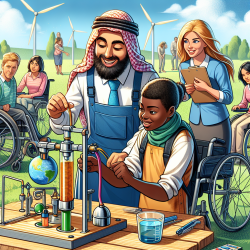Introduction
In the ever-evolving landscape of educational leadership, staying informed about innovative technologies and their potential applications is crucial. One such innovation is interfacial solar vapor generation (ISVG), a promising development in solar-thermal conversion that has gained attention for its potential in various fields, including education. This blog explores how ISVG can be leveraged to improve special education practices, enhance learning environments, and encourage further research.
Understanding Interfacial Solar Vapor Generation
ISVG is a novel approach to solar-thermal conversion that focuses on efficiently converting solar energy into vapor at the interface of water and air. This technology has demonstrated significant advantages over traditional solar vapor generation methods, including higher energy transfer efficiency and reduced thermal losses. By using advanced materials and nanostructures, ISVG can achieve solar vapor efficiencies of up to 80%, making it a compelling option for various applications.
Applications in Special Education
As a Special Education Director, you might wonder how ISVG could be relevant to your field. Here are some potential applications:
- Energy-Efficient Classrooms: ISVG can be integrated into school infrastructure to provide sustainable heating and cooling solutions, reducing energy costs and creating a more comfortable learning environment for students with special needs.
- Off-Grid Learning Centers: In remote or underserved areas, ISVG can power off-grid learning centers, ensuring that students with special needs have access to quality education regardless of their location.
- Research and Innovation: Encouraging students and educators to explore ISVG as a research topic can foster innovation and critical thinking skills, particularly in STEM (Science, Technology, Engineering, and Mathematics) education.
Encouraging Further Research
The potential of ISVG in special education is vast, but it requires further exploration and research. As educational leaders, we can play a pivotal role in promoting research initiatives that investigate the integration of ISVG into educational settings. By collaborating with researchers, educators, and industry experts, we can identify best practices and develop guidelines for implementing ISVG in schools.
Conclusion
Interfacial solar vapor generation represents a significant advancement in solar-thermal technology with potential applications in special education. By embracing this innovation, we can enhance learning environments, reduce energy costs, and promote sustainability in our schools. To read the original research paper, please follow this link: The revival of thermal utilization from the Sun: interfacial solar vapor generation.










